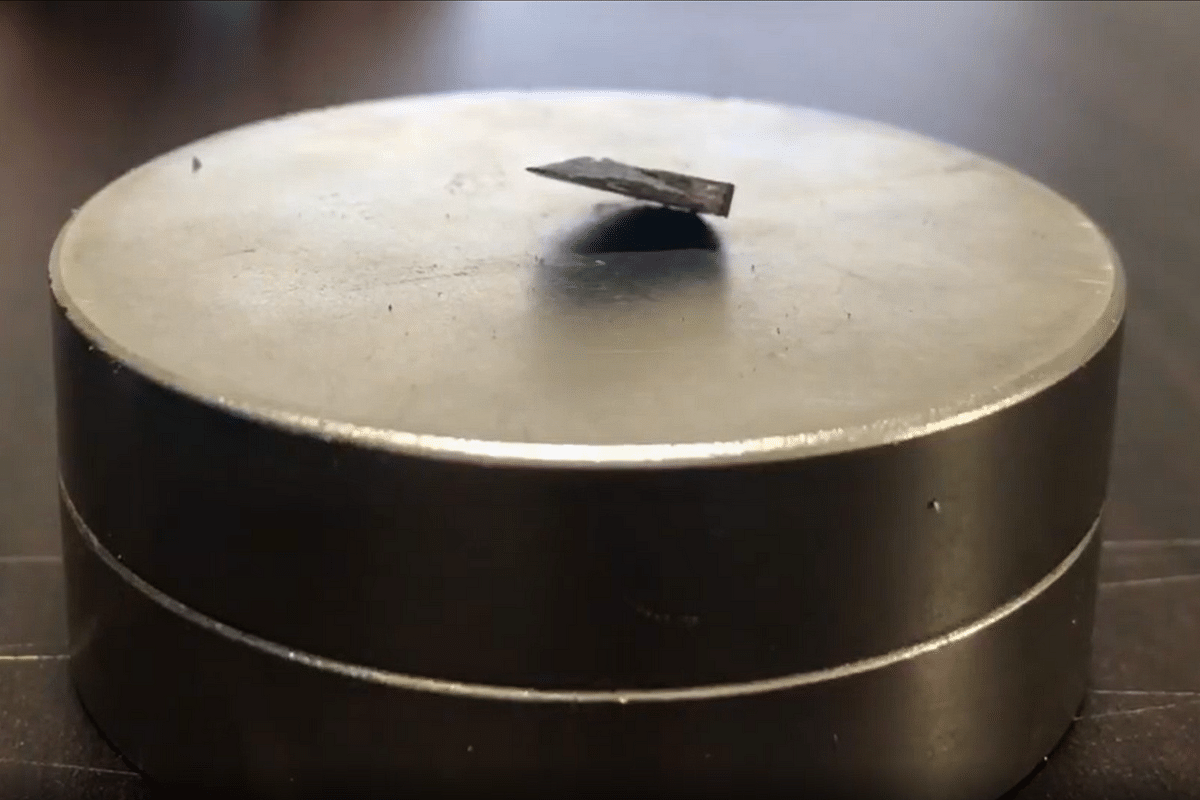Science
Researchers Claim Breakthrough Discovery Of New Room-Temperature, Ambient-Pressure Superconductor
- A superconductor that works at room temperature and pressure would be nothing short of revolutionary.

Claimed superconductor said to be displaying levitation at room temperature and atmospheric pressure
A team of physicists from South Korea have announced the creation of a room-temperature, ambient-pressure superconducting material.
However, their work has not yet undergone peer review and has been posted on a preprint server.
Superconductivity was discovered by Dutch physicist Heike Kamerlingh Onnes in 1911. For over a century, scientists worldwide have been searching for a material that can conduct electricity without resistance, called a superconductor.
They have been able to make superconductors work at times, but only under extreme conditions like very low temperatures (extreme cold) and very high pressures.
So, a superconductor that works at room temperature and pressure would be nothing short of revolutionary.
The discovery of such a material would have profound implications for the electricity and electronics industries. It would eliminate the loss of electricity due to heat dissipation in power lines and prevent heat-related problems in electronic devices.
It would have applications in nuclear fusion reactors, quantum computers, batteries, magnetic resonance imaging (MRI) machines, super-fast maglev (magnetic levitation) trains, and much more.
The Korean research team published two papers on the arXiv preprint server, detailing the creation of their new material, named LK-99.
They explain that LK-99, a modified form of the mineral lead apatite, was produced by mixing sulphur, oxygen, and phosphorus powders and subjecting the mixture to high temperatures for several hours. This process resulted in a dark grey superconductive material.
The team claims to have conducted tests on samples of LK-99, applying electricity and observing a near-zero sensitivity. They also report that the material exhibited the Meissner effect, which is a characteristic of superconductivity.
Discovered by German physicists W Meissner and R Ochsenfeld in 1933, the Meissner effect is the expulsion of a magnetic field from a superconductor during its transition to the superconducting state.
To support their claims, the Korean researchers provided a video showing the partial levitation of the material when placed on a magnet. They say the levitation was only partial because of impurities present in their material.
The research team's papers have sparked both excitement and scepticism within the science community.
In recent years, there have been numerous instances of researchers claiming to have discovered room-temperature, ambient-pressure superconductors, all of which have failed to live up to their promises.
In response to this scepticism, the researchers behind this new effort have suggested that others replicate their experiments to verify their findings.
If the team's claims are indeed true, their achievement would be one of the more significant breakthroughs in physics.
The LK-99 could have "various applications such as magnet, motor, cable, levitation train, power cable, qubit for a quantum computer, THz Antennas, etc," the researchers say in their paper.
"We believe that our new development will be a brand-new historical event that opens a new era for humankind," the paper concludes.
Support Swarajya's 50 Ground Reports Project & Sponsor A Story
Every general election Swarajya does a 50 ground reports project.
Aimed only at serious readers and those who appreciate the nuances of political undercurrents, the project provides a sense of India's electoral landscape. As you know, these reports are produced after considerable investment of travel, time and effort on the ground.
This time too we've kicked off the project in style and have covered over 30 constituencies already. If you're someone who appreciates such work and have enjoyed our coverage please consider sponsoring a ground report for just Rs 2999 to Rs 19,999 - it goes a long way in helping us produce more quality reportage.
You can also back this project by becoming a subscriber for as little as Rs 999 - so do click on this links and choose a plan that suits you and back us.
Click below to contribute.
Latest